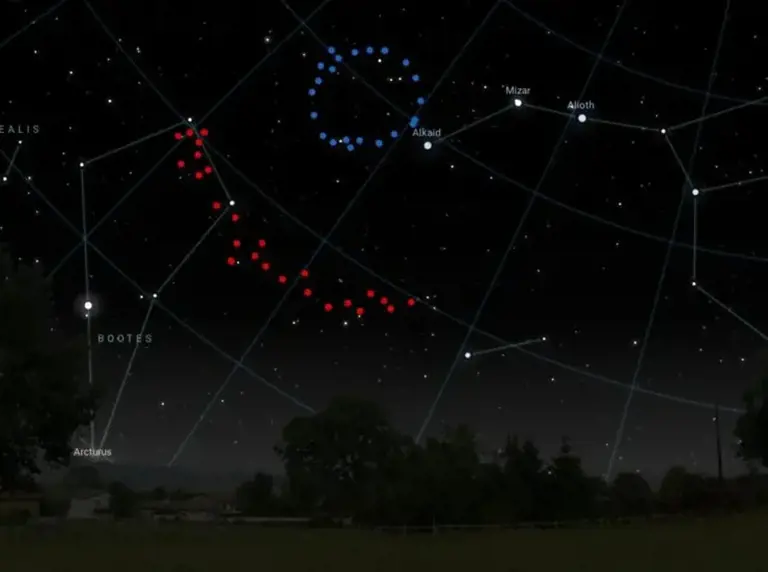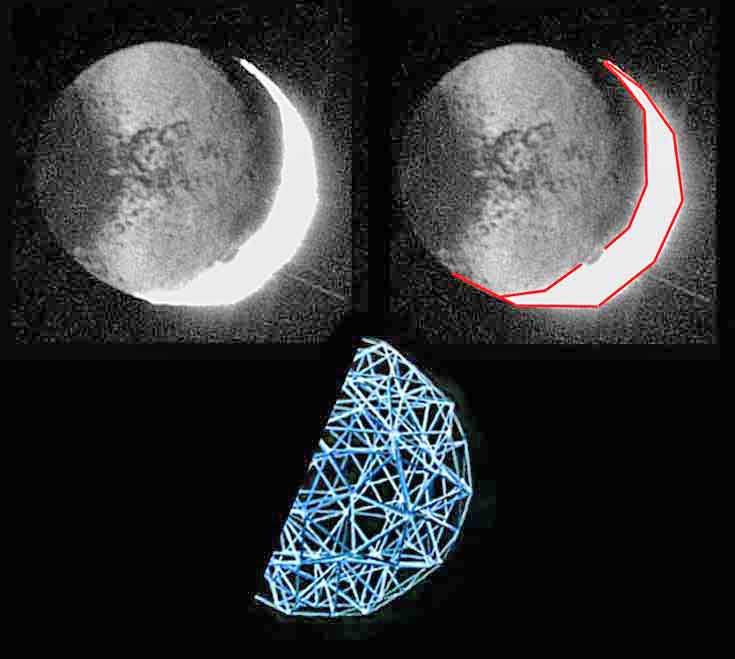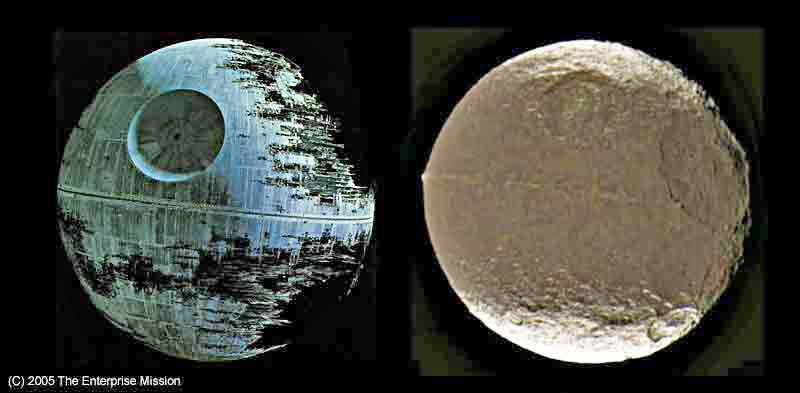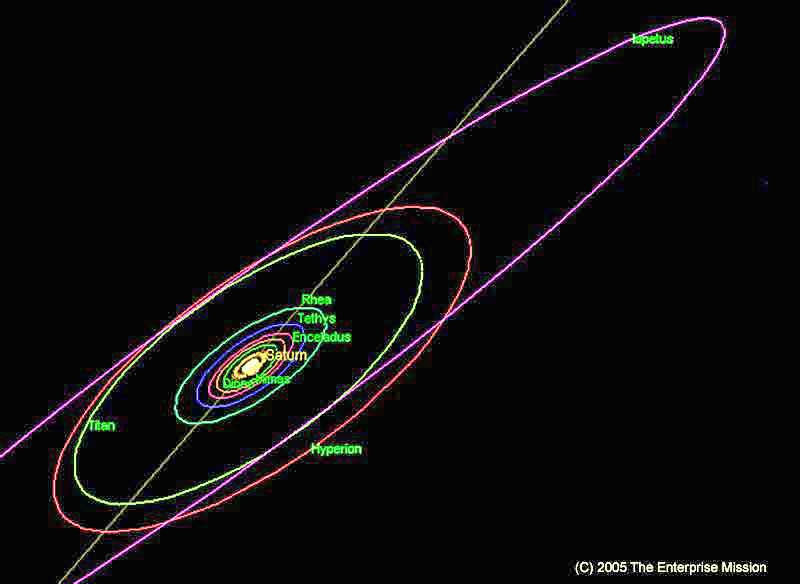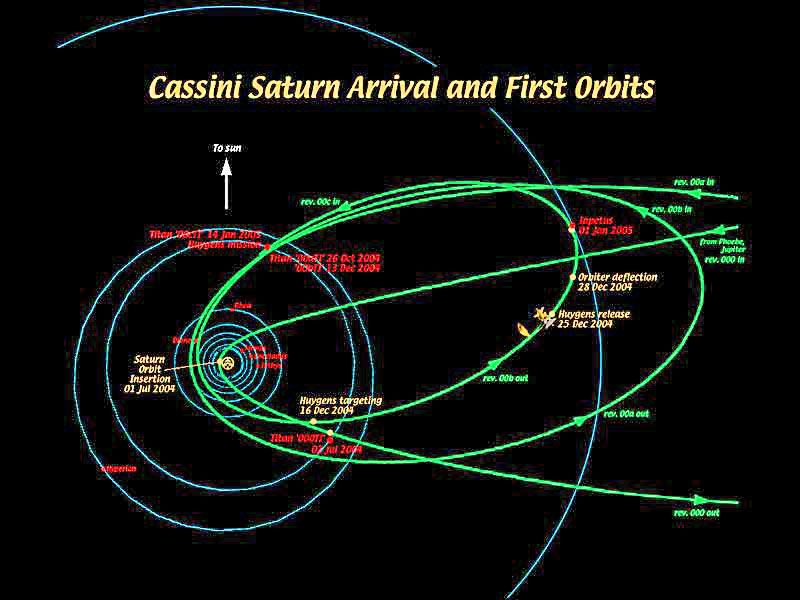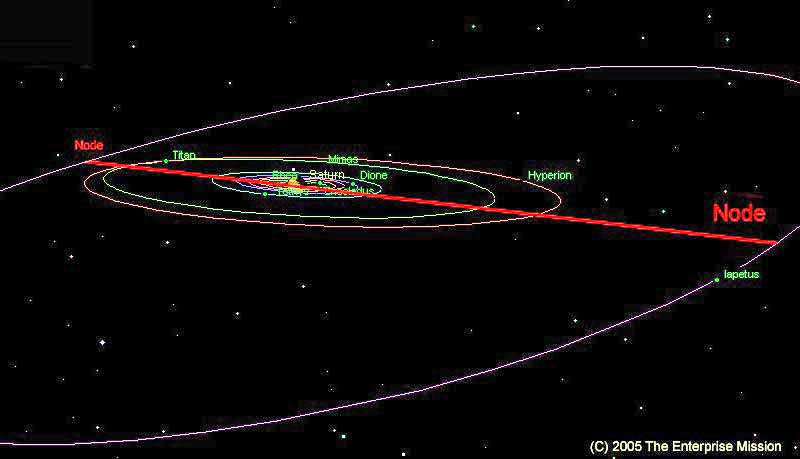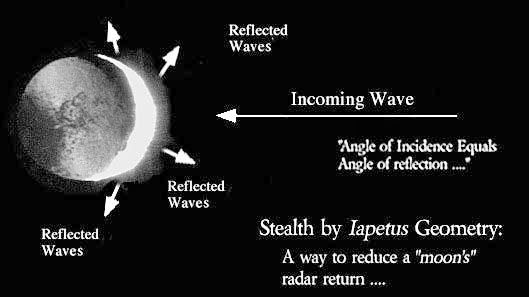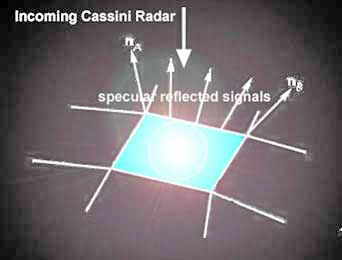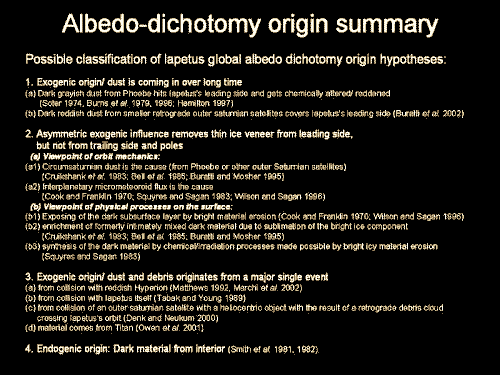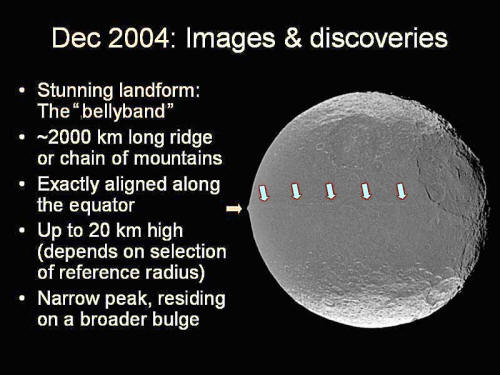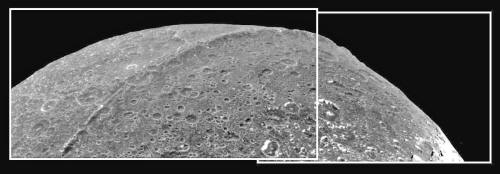Navigation
Install the app
How to install the app on iOS
Follow along with the video below to see how to install our site as a web app on your home screen.

Note: This feature currently requires accessing the site using the built-in Safari browser.
More options
You are using an out of date browser. It may not display this or other websites correctly.
You should upgrade or use an alternative browser.
You should upgrade or use an alternative browser.
The Geminga Scenario
- Thread starter Stryder50
- Start date
Stryder50
Platinum Member
- Thread starter
- #162
I'll plop this somewhere else later, but "archive" here for now;
Beijing-based Betavolt said its nuclear battery is the first in the world to realise the miniaturisation of atomic energy, placing 63 nuclear isotopes into a module smaller than a coin.
...

Nuclear battery produces power for 50 years without needing to charge
A Chinese startup has unveiled a new battery that it claims can generate electricity for 50 years with(out) the need for charging or maintenance.Beijing-based Betavolt said its nuclear battery is the first in the world to realise the miniaturisation of atomic energy, placing 63 nuclear isotopes into a module smaller than a coin.
...

Stryder50
Platinum Member
Stryder50
Platinum Member
- Thread starter
- #165
Along with Venus, Uranus is another planet that displays characteristics highly suggestive of a massive and recurring 'Object' (world/planet/'brown dwarf-?) having passed through our Solar System and disrupted axial tilt and orbits of some(all?) of the planets. Uranus pointing a rotational pole towards the Sun and rolling around in it's orbit on it's 'equator' is the most dramatic of such.
NASA's Webb Space Telescope shows off its most detailed image of Uranus yet, revealing storms and a 21-year-long winter in exquisite detail
Stryder50
Platinum Member
Stryder50
Platinum Member
Stryder50
Platinum Member
- Thread starter
- #168
Speaking of ancient Greece, here's an interesting factoid.
Per researcher Chatelain (from several years ago) there was a pattern of Greek temples in the Aegean Sea sited in the pattern of a maltese cross. Given the lack of precision in longitude due to lack of precise timekeeping devices, this is rather impressive placement, if solely done by humans. Now if there was assistance via some orbital observations ....
THE MALTESE CROSS OF THE AGEAN SEA
PSATHOURA ^ S . LESBOS ^ S / ANTANDROS
DELPHES \ / SARDES
HERMIONE > DELOS J*C < DIDYME
MATAPAN / \ CAMIROS
ARADEN A x ^ D I A ^ V A AKRA
A beautiful Maltese cross centered on the island of Delos and 540
kilometers wide, can be obtained by tracing lines between thirteen famous
Greek temples around the Aegean Sea, but ancient Greeks did not know it.
Was that cross traced by astronauts from outer space several thousand
years ago?
FIGURE 1. Chatelain's "Maltese cross" and his description
Chatelain then moves from the two circles to the Maltese cross
....
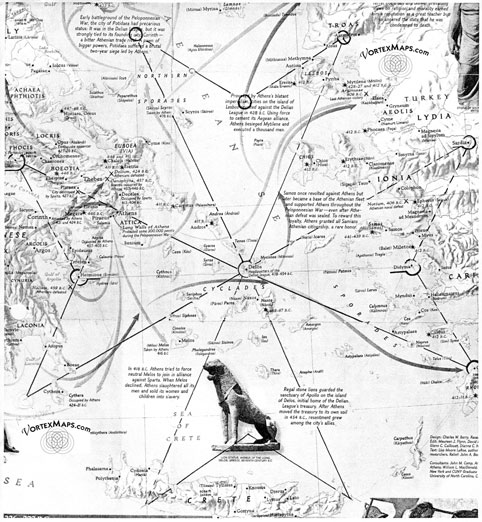
Per researcher Chatelain (from several years ago) there was a pattern of Greek temples in the Aegean Sea sited in the pattern of a maltese cross. Given the lack of precision in longitude due to lack of precise timekeeping devices, this is rather impressive placement, if solely done by humans. Now if there was assistance via some orbital observations ....
THE MALTESE CROSS OF THE AGEAN SEA
PSATHOURA ^ S . LESBOS ^ S / ANTANDROS
DELPHES \ / SARDES
HERMIONE > DELOS J*C < DIDYME
MATAPAN / \ CAMIROS
ARADEN A x ^ D I A ^ V A AKRA
A beautiful Maltese cross centered on the island of Delos and 540
kilometers wide, can be obtained by tracing lines between thirteen famous
Greek temples around the Aegean Sea, but ancient Greeks did not know it.
Was that cross traced by astronauts from outer space several thousand
years ago?
FIGURE 1. Chatelain's "Maltese cross" and his description
Chatelain then moves from the two circles to the Maltese cross
....

Temples Around the Aegean Sea Form a Maltese Cross, from Maurice Chatelain
When we connect all the sites with straight lines going from point to point...we have drawn the magnificent geometrical figure known as the Maltese cross...
www.vortexmaps.com
Temples Around the Aegean Sea Form a Maltese Cross
Maurice Chatelain's Our Cosmic Ancestors book
I can't get these images/maps to copy here, so you'll have to go to the links to see them.Stryder50
Platinum Member
Stryder50
Platinum Member
Stryder50
Platinum Member
- Thread starter
- #171
FWIW
This event allowed scientists to calculate the energy released and determine the safe distances from such an explosion: 3 light-years for X-ray afterglow effects, 13 light-years for gamma rays, and up to 36 light-years for cosmic rays.
Despite the potential dangers, the rarity of binary neutron star mergers and their relatively small lethality range suggest they are not a significant threat to life on Earth.
The study estimates that the mean recurrence time of lethal mergers at the Sun's location far exceeds the age of the Universe.
However, even non-lethal proximity to a kilonova could disrupt Earth's technology and remain visible in the sky for over a month
...
A kilonova explosion, light years away, would devastate the Earth
...Safe distance: Calculating the cosmic buffer
The study focused on a particular kilonova, GW170817, situated about 130 million light-years from Earth, observed first in 2017.This event allowed scientists to calculate the energy released and determine the safe distances from such an explosion: 3 light-years for X-ray afterglow effects, 13 light-years for gamma rays, and up to 36 light-years for cosmic rays.
Despite the potential dangers, the rarity of binary neutron star mergers and their relatively small lethality range suggest they are not a significant threat to life on Earth.
The study estimates that the mean recurrence time of lethal mergers at the Sun's location far exceeds the age of the Universe.
However, even non-lethal proximity to a kilonova could disrupt Earth's technology and remain visible in the sky for over a month
...
Stryder50
Platinum Member
- Thread starter
- #172
FWIW:
Neanderthals were wiped out by chance changes in the environment. The rise of Homo sapiens wasn’t inevitable.
8 Billion People: How Different the World Would Look if Neanderthals Had Prevailed
Neanderthals were wiped out by chance changes in the environment. The rise of Homo sapiens wasn’t inevitable.
:extract_focal()/https%3A%2F%2Fpocket-syndicated-images.s3.amazonaws.com%2Farticles%2F8487%2F1683319223_file-20221115-15-h87geb.jpg)
8 Billion People: How Different the World Would Look if Neanderthals Had Prevailed
Neanderthals were wiped out by chance changes in the environment. The rise of Homo sapiens wasn’t inevitable.
 getpocket.com
getpocket.com
:extract_focal()/https%3A%2F%2Fpocket-syndicated-images.s3.amazonaws.com%2Farticles%2F8487%2F1683319223_file-20221115-15-h87geb.jpg)
8 Billion People: How Different the World Would Look if Neanderthals Had Prevailed
Neanderthals were wiped out by chance changes in the environment. The rise of Homo sapiens wasn’t inevitable.
Stryder50
Platinum Member
- Thread starter
- #173
I'm going to need to update some earlier links regarding a key element of this hypothesis.
Regards Saturn's Moon Iapetus, which has several unusual features and could be a candidate for an interstellar colony ship that came here 300-500,000 years ago and could be the "Nibiru" home of the Anunnaki.
But first, looks like I need to paste another post here for context.
Regards Saturn's Moon Iapetus, which has several unusual features and could be a candidate for an interstellar colony ship that came here 300-500,000 years ago and could be the "Nibiru" home of the Anunnaki.
But first, looks like I need to paste another post here for context.
Stryder50
Platinum Member
- Thread starter
- #174
In connection to the above post, this from another thread, pasted here. Given the likely long time spans with current technology and science meaning trips to near by stars could take decades to centuries, than the following construct of vehicles/vessels may apply.
................................
Generation spaceships/starships will likely evolve out of large colony habitats orbiting Earth. Such have been contemplated as more economical way to support large scale construction projects such as a ring of orbital solar power satellites in geosynchronous orbit. Working along with colonies on the Moon where most of the mining and manufacture might be.
If used for interstellar travel, such as the nearly five LY trip to Alpha Centari (closes star -trinary system), large asteroids might be the nucleus for such. sections hollowed out inside for habitat, etc, and the mass of the asteroid used for propellant.


Images for orbital colonies and habitats in space
................................
Generation spaceships/starships will likely evolve out of large colony habitats orbiting Earth. Such have been contemplated as more economical way to support large scale construction projects such as a ring of orbital solar power satellites in geosynchronous orbit. Working along with colonies on the Moon where most of the mining and manufacture might be.
If used for interstellar travel, such as the nearly five LY trip to Alpha Centari (closes star -trinary system), large asteroids might be the nucleus for such. sections hollowed out inside for habitat, etc, and the mass of the asteroid used for propellant.
Space habitat - Wikipedia
O'Neill cylinder - Wikipedia


Images for orbital colonies and habitats in space
Stryder50
Platinum Member
- Thread starter
- #175
Iapetus - Moon with a View: Or, What Did Arthur Know … and When Did He Know it?
www.bibliotecapleyades.net

by Richard C. Hoagland
2005
2005
from TheEnterpriseMission Website
"The only way of discovering the limits of the possible
is to venture a little way past them…
into the impossible."
Clarke’s Second Law
Contents
Stryder50
Platinum Member
- Thread starter
- #176
What follows are the six parts of Hoagland's (RCH)articles on Iapetus based in the limited images and data of one (publicly) known passage by the Cassini spacecraft during it's mission to survey Saturn and it's moons (33 currently known). Iapetus wasn't on the origin mission plan, but a course adjustment using gravity sling had Cassini using Iapetus for that purpose, hence a chance for closer imaging. (interestingly, the ground penetrating radar instrument wasn't used ??? 
 )
)
Each of the six parts articles in the series are rather long, and loaded with data and images, so for brevity I'm only presenting some of the highlights here. I strongly recommend reading each thoroughly, they present a fascinating and intriguing story and mystery.
One interesting aspect is that Iapetus was the destination for the Discovery space craft in the book version of Arthur C. Clark's "2001 A Space Odyessy", dropped from the movie version, and RCH covers this at the start of Part I.
Iapetus has an unusual orbit compared to the rest of Saturn's moons, will cover this in a later post. It is @ 900 miles in diameter but where physics and gravity would produce a sphere in objects this size, it is slightly "squashed" by about 50 miles on the vertical dimension. It also has an unusual "mountain ridge" exactly on it's equator which is very straight and narrow and would seem not natural. It also has several "craters" that are very straight line geometric rather than the usual round, many of a hexagon shape. Enough preview text, on to the images;
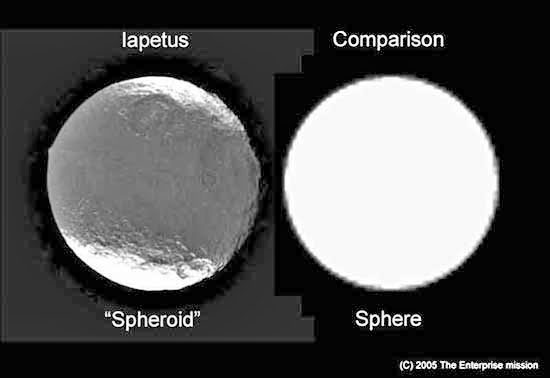
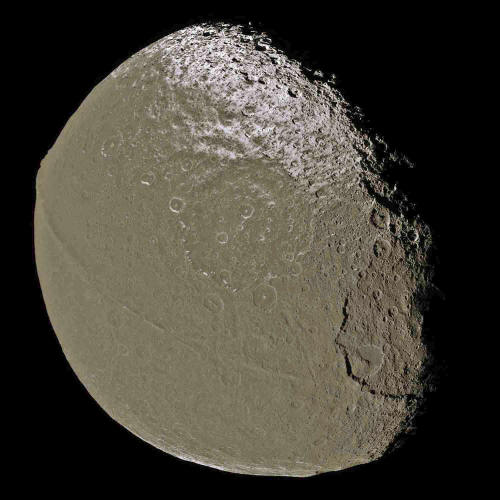
Wall is 12 miles high and 12 miles wide ... ?!
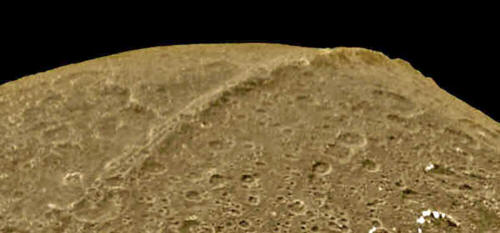
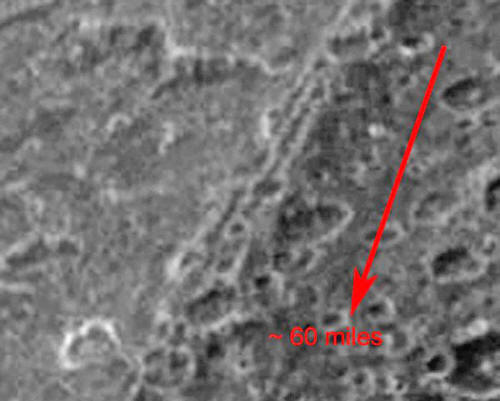
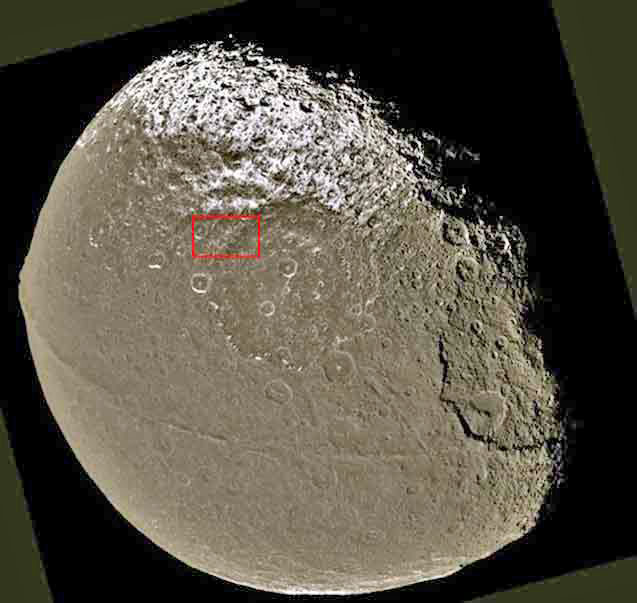
In this inset (below) is a striking set of clearly defined, astonishing, repeating, three-dimensional rectilinear surface patterns -- imaged in color and located several hundred miles north of the Wall
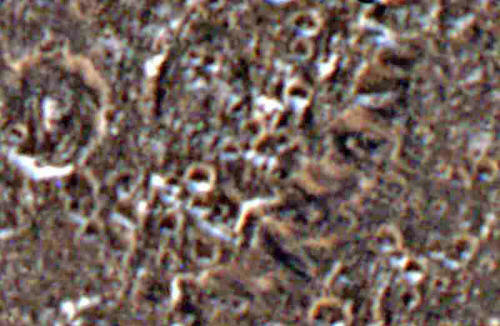
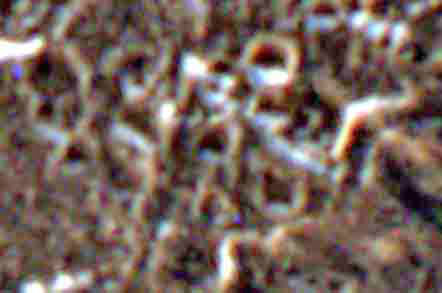

 )
)Each of the six parts articles in the series are rather long, and loaded with data and images, so for brevity I'm only presenting some of the highlights here. I strongly recommend reading each thoroughly, they present a fascinating and intriguing story and mystery.
One interesting aspect is that Iapetus was the destination for the Discovery space craft in the book version of Arthur C. Clark's "2001 A Space Odyessy", dropped from the movie version, and RCH covers this at the start of Part I.
Iapetus has an unusual orbit compared to the rest of Saturn's moons, will cover this in a later post. It is @ 900 miles in diameter but where physics and gravity would produce a sphere in objects this size, it is slightly "squashed" by about 50 miles on the vertical dimension. It also has an unusual "mountain ridge" exactly on it's equator which is very straight and narrow and would seem not natural. It also has several "craters" that are very straight line geometric rather than the usual round, many of a hexagon shape. Enough preview text, on to the images;


Wall is 12 miles high and 12 miles wide ... ?!



In this inset (below) is a striking set of clearly defined, astonishing, repeating, three-dimensional rectilinear surface patterns -- imaged in color and located several hundred miles north of the Wall


Stryder50
Platinum Member
- Thread starter
- #177
Highlights of Part 2;
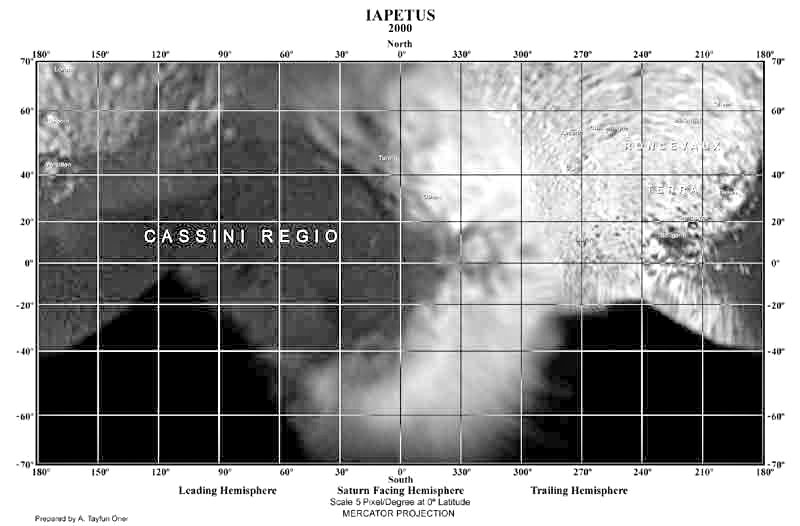
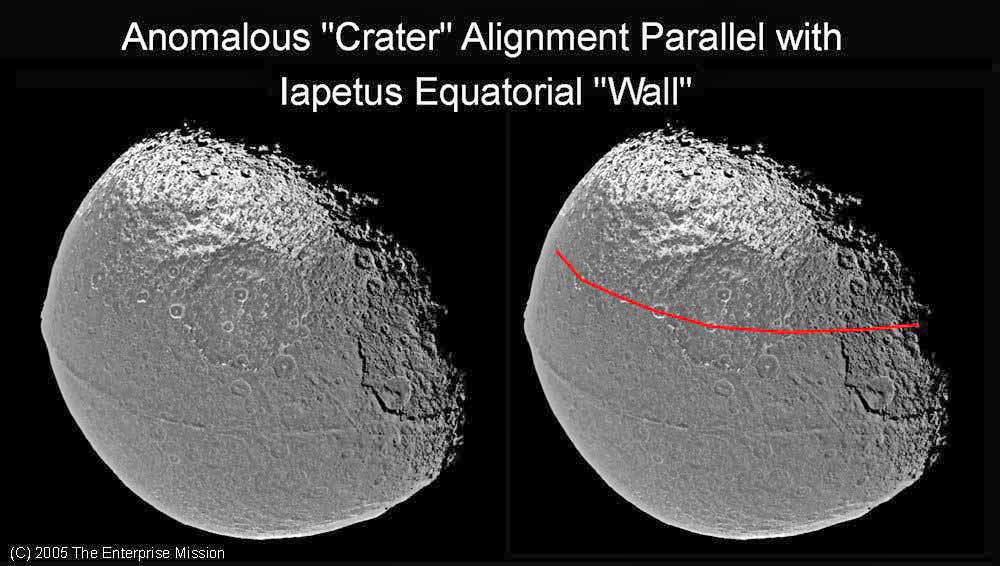
"If I am correct, what we are seeing as “geometrically arranged craters” on Iapetus are, in fact, structurally-defined surface collapse features – revealing key weak points in the basic sub-modules of this “artificial moon.” ...
using the fundamental principal of the “tetrahedral truss.” "
This, of course, was the secret of Buckminster Fuller’s famed “Geodesic Domes” (below).

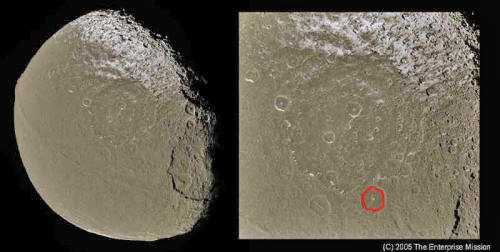
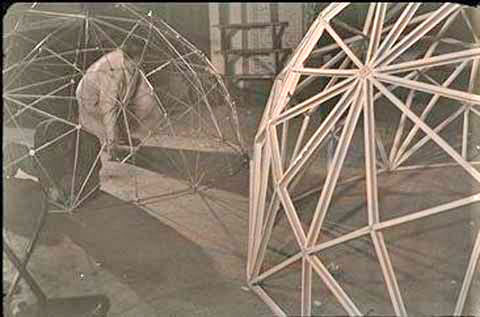
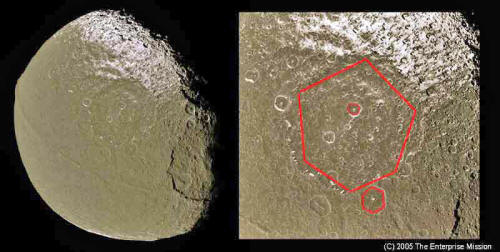
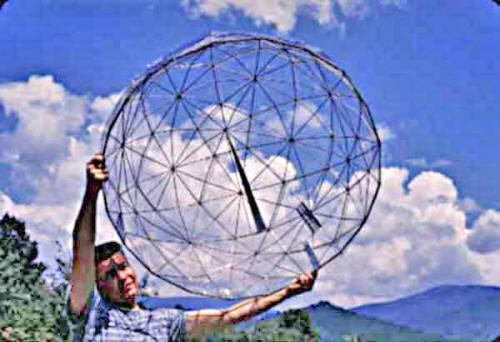
but the outlined areas appear to mark at least six (tetrahedral?) amazingly flat “sides” – each measuring hundreds of miles in length!
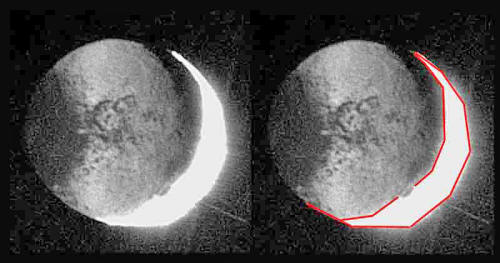
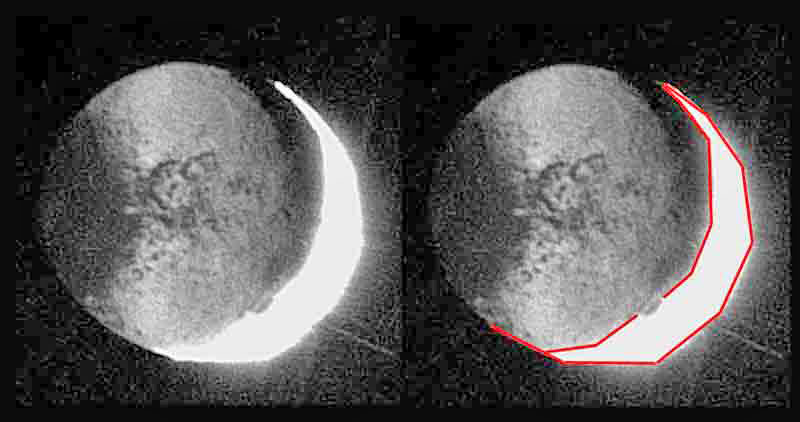
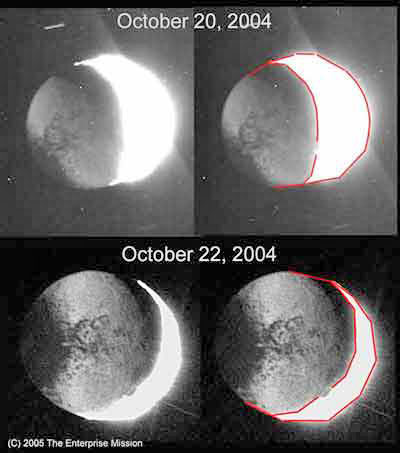
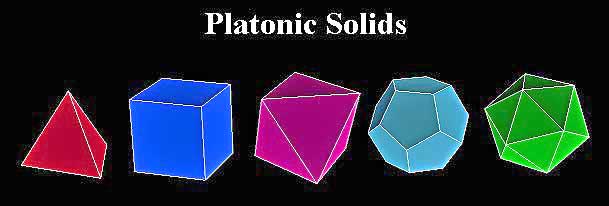
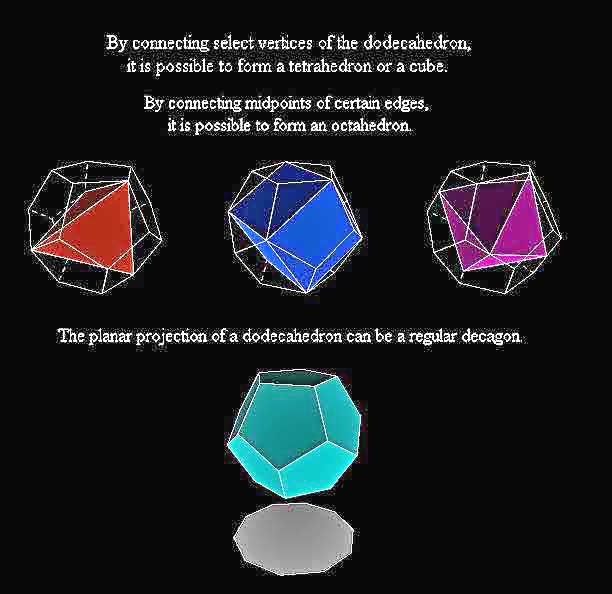
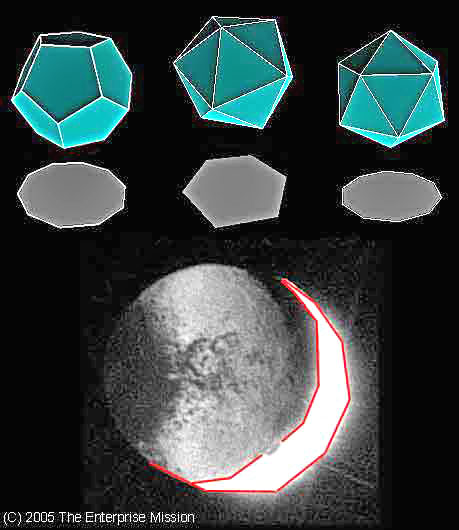
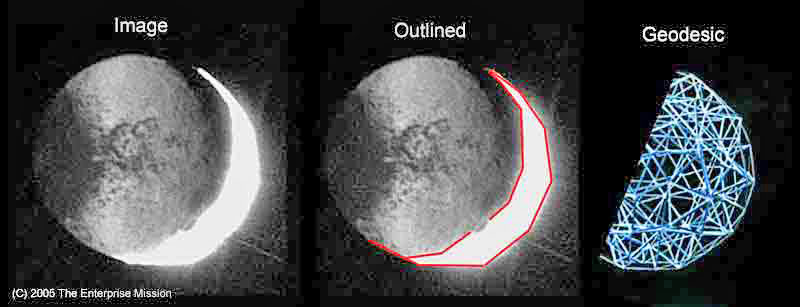
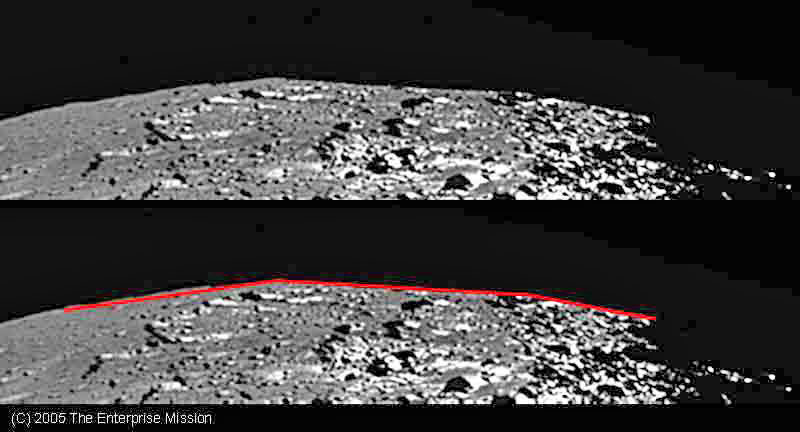
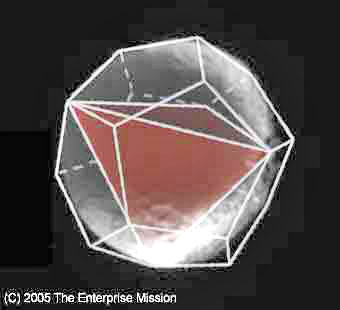


"If I am correct, what we are seeing as “geometrically arranged craters” on Iapetus are, in fact, structurally-defined surface collapse features – revealing key weak points in the basic sub-modules of this “artificial moon.” ...
using the fundamental principal of the “tetrahedral truss.” "
This, of course, was the secret of Buckminster Fuller’s famed “Geodesic Domes” (below).





but the outlined areas appear to mark at least six (tetrahedral?) amazingly flat “sides” – each measuring hundreds of miles in length!









Stryder50
Platinum Member
- Thread starter
- #179
Part 4
______
EXCERPT:
....
Ok, this is the part the critics hate the most—
Where we freely speculate about what all of this might mean ….
As noted earlier, the late cosmologist Sir Fred Hoyle once remarked “I don't see the logic of rejecting data just because they seem incredible.” So, despite what you might have heard, speculation to sort out which data is “incredible” has to be at the heart of the true scientific method. All scientific hypotheses are really nothing more than “dressed up speculations.”
Without venturing a hypothesis, even an “outrageous one” -- attempting to knit together all the various assembled facts into some kind of a coherent storyline (the speculative part) -- “science” would simply be an exercise in making lists ….
In truth, astronomers have engaged in many, many speculations over the mysterious nature of Iapetus for literally hundreds of years: starting with the source and origin of “the Dark Side of Iapetus.” Here (below - courtesy of Tilmann Denk, from the Cassini Team) are just a few of the most recent speculations on Iapetus, offered by professional astronomers (including, some other current members of the Cassini Team …) to explain this “ oldest riddle in planetology.”
Then (thanks again to Denk - below), there’s Cassini’s newest, literally “off the wall” Iapetus discovery … and its associated “scientific speculations.”
Even so, the usual geological speculations by the Cassini team to “explain” their suddenly “unique solar system feature” (translation: “we have no previous experience with whatever this thing is … from any prior planetary mission … but here’s what we think it might be anyway …”), have not been long in coming:
Translation: “It has to be a mountain range … right?”
But all too soon this official, isolated speculation about the origin of the “Iapetus Wall” has evolved … into using this “unknown” in an effort to “explain” – via additional speculation -- another, centuries-old “unknown” …
So, when critics look with derision on “speculation in science” – keep in mind that ALL true science begins precisely in such speculation ... even NASA’s. There are no exceptions. The political truth is, certain “speculations” re Iapetus are simply on the “approved list” at this point … and the rest are carefully “forbidden”—
So, here (below) are some of our own “scientific speculations” on Iapetus – mixed with some startling new facts.
..........

However, if the geometry we see on Iapetus’ was part of the remains of former underground installations … revealed through either catastrophic bombardment, or a much longer age of meteor erosion of overlying surface layering ... then the whole idea of Ipaetus as some kind of “space base” -- or even a designed “moon-sized space station” -- began to make more sense.
It was after analyzing these atmospheric rates, and the startling new images presented by Cassini – especially, Iapetus’ bizarre geometric shape – that I came to the provisional conclusion that Iapetus had not been “built upon” … so much as it had to be carefully designed!
And, a lot has happened to “the neighborhood” since that occurred ….
The second major clue in favor of this radical idea was the orbit of Iapetus.
All the other “regular” moons – from little Mimas (~250 mile diameter) to Titan (~3200 miles across) – orbit in the plane of Saturn’s equator, along with the trillions of particles making up the rings (below).
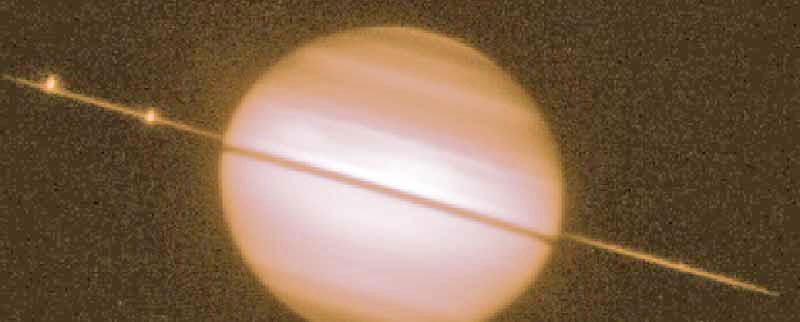
Iapetus is different. Though the third largest satellite (after Titan) -- at slightly over 900 miles across -- as noted earlier, Iapetus orbits significantly inclined to the rest of Saturn’s moons (below) – at some ~15 degrees … and over 2 million miles (~ 60 Saturn radii) away.
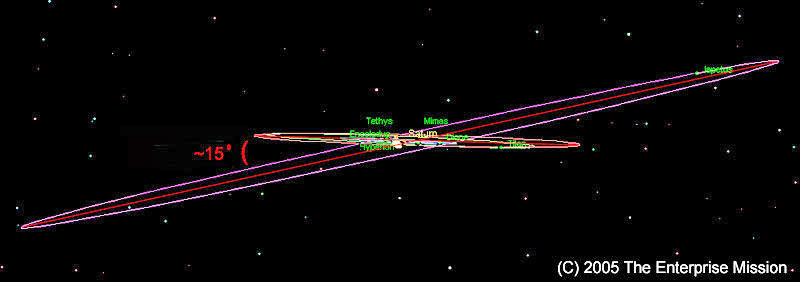
Flattened “nebular models” for both the swirling condensation of the solar system from an original cloud of interstellar gas and dust -- as well as the condensation of the major planets within that flattened nebula (below) -- have difficulty with high inclination orbits; frictional forces and mutual gravitational encounters should “warp” the orbits of forming planets and/or satellites down into the general plane of all the other forming objects, even before they’re fully formed ….
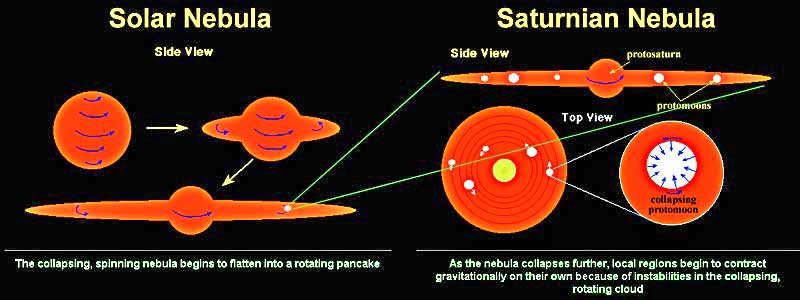
The high orbital inclination of the third largest moon in the Saturn system … and in the outer regions of its proto-nebula … presents a fundamental “problem” for this simple picture. One way around this problem is to explain the “anomaly” as due to “a catastrophic collision/interaction with another proto-moon” as Iapetus was forming. However, this is an “ad hoc” solution -- born of a lack (in the strictly natural paradigm) of any viable alternative ….
Once the (amazing) possibility is admitted that Iapetus could be an artificial “moon” – and may have been deliberately inserted into such an odd orbit – the “coincidental” nature of its unique, steep inclination (relative to the other similar-sized Saturnian moons -- Dione, Rhea, etc.) goes away.
But, equally “coincidental” is the shape of Iapetus’ inclined orbit … and its precise distance from Saturn.
Iapetus’ orbit is extremely close to being circular -- with an eccentricity of only 0.0283 – departing from a perfect circle by slightly less than 3%. (By comparison, our Moon’s orbital eccentricity – a body that mainstream planetologists now propose was born from a similar theorized “collision” – is 0.0549 or ~ 6% … essentially twice as eccentric as Iapetus!)
For an almost circular, very high inclination orbit to have formed through “random chance” is really pushing coincidence -- if the agent for achieving that low eccentricity and the high inclination is supposed to be the same “random” collisional event, back when Iapetus was forming.
And, there’s more.
The sharp reader will have noticed, from the preceding references, that Iapetus currently orbits slightly less than 60 radii away from Saturn (59.091 radii, to be exact - below). This discrepancy, 0.15% -- in the artificial model that precisely 60 radii was originally intended -- would represent how much Iapetus has drifted since it was “parked” (as a designed “station”) in Saturn orbit. That rate of drift, either due to Saturnian/sun tides, or other forces (to be discussed in detail later), could give another way to estimate – other than by counting craters – roughly “when” this entire scenario in fact occurred ….
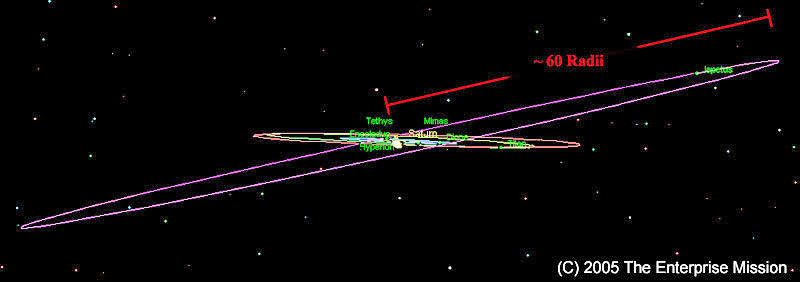
That “ideal” Iapetus distance from Saturn just “happens” to also be base 60 -- another tetrahedral number -- suddenly appearing in the first Sumerian civilization on Earth some ~ 6000 years ago …. A number that fits perfectly into the redundant, equally mysterious tetrahedral placement of the two major “ring basins” we’ve previously discussed on Iapetus … 120/240 degrees apart.
And, the same number that is also redundantly communicated via Iapetus’ own baffling Platonic shape!
Which leads us to another startling “coincidence.”
If you take the inclination of Iapetus’ orbit (~ 15 degrees) and multiply by its distance in Saturn radii (60), the result is the average of the current Cassini “triaxial measurements” of Iapetus’ diameter (below)—
~ 900 miles!
The measured Iapetus’ diameter!!
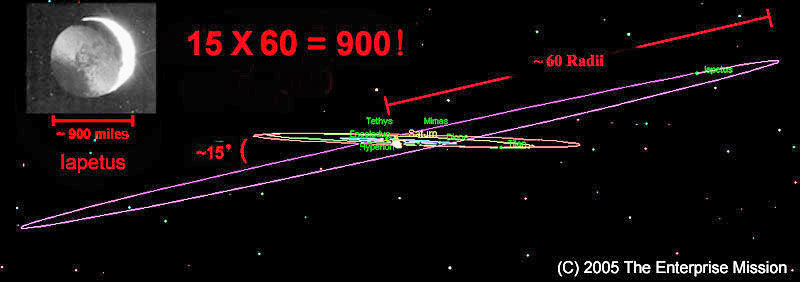
(The slight discrepancies between the “ideal numbers,” and those currently observed, can easily be explained as slight changes – occurring over a literally geological period of time – in the evolving orbital elements of Iapetus … again, due to external solar system forces.)
All these numbers – Iapetus’ size, distance from Saturn, and orbital inclination -- are “independent variables.” Meaning – none of them are automatically interrelated, or mandated by any current theory of satellite formation. Yet, for some reason, they have all come together in Iapetus … this one bizarre “moon” … orbiting Saturn. This simply makes no sense, and the odds of it happening coincidentally – especially, resulting in the actual diameter of Iapetus expressed in miles! -- are (really!) “astronomical”—
Unless this was designed!
............
End first half of Part 4;
______
EXCERPT:
....
Ok, this is the part the critics hate the most—
Where we freely speculate about what all of this might mean ….
As noted earlier, the late cosmologist Sir Fred Hoyle once remarked “I don't see the logic of rejecting data just because they seem incredible.” So, despite what you might have heard, speculation to sort out which data is “incredible” has to be at the heart of the true scientific method. All scientific hypotheses are really nothing more than “dressed up speculations.”
Without venturing a hypothesis, even an “outrageous one” -- attempting to knit together all the various assembled facts into some kind of a coherent storyline (the speculative part) -- “science” would simply be an exercise in making lists ….
In truth, astronomers have engaged in many, many speculations over the mysterious nature of Iapetus for literally hundreds of years: starting with the source and origin of “the Dark Side of Iapetus.” Here (below - courtesy of Tilmann Denk, from the Cassini Team) are just a few of the most recent speculations on Iapetus, offered by professional astronomers (including, some other current members of the Cassini Team …) to explain this “ oldest riddle in planetology.”
Then (thanks again to Denk - below), there’s Cassini’s newest, literally “off the wall” Iapetus discovery … and its associated “scientific speculations.”
… its origin is a puzzle so far, and no similar geologic feature has been observed elsewhere in the solar system [emphasis added] ….”
Even so, the usual geological speculations by the Cassini team to “explain” their suddenly “unique solar system feature” (translation: “we have no previous experience with whatever this thing is … from any prior planetary mission … but here’s what we think it might be anyway …”), have not been long in coming:
… it is not yet clear whether the ridge is a mountain belt that has folded upward, or an extensional crack in the surface through which material from inside Iapetus erupted onto the surface and accumulated locally, forming the ridge ….”
Translation: “It has to be a mountain range … right?”
But all too soon this official, isolated speculation about the origin of the “Iapetus Wall” has evolved … into using this “unknown” in an effort to “explain” – via additional speculation -- another, centuries-old “unknown” …
… thus, Cassini Regio [the dark ellipse] may have had its origin in plume-style eruptions in which dark particulate materials accumulated on the surface as fallout, perhaps in conjunction with the creation of the equatorial ridge [emphasis added] ....
So, when critics look with derision on “speculation in science” – keep in mind that ALL true science begins precisely in such speculation ... even NASA’s. There are no exceptions. The political truth is, certain “speculations” re Iapetus are simply on the “approved list” at this point … and the rest are carefully “forbidden”—
So, here (below) are some of our own “scientific speculations” on Iapetus – mixed with some startling new facts.
..........

However, if the geometry we see on Iapetus’ was part of the remains of former underground installations … revealed through either catastrophic bombardment, or a much longer age of meteor erosion of overlying surface layering ... then the whole idea of Ipaetus as some kind of “space base” -- or even a designed “moon-sized space station” -- began to make more sense.
It was after analyzing these atmospheric rates, and the startling new images presented by Cassini – especially, Iapetus’ bizarre geometric shape – that I came to the provisional conclusion that Iapetus had not been “built upon” … so much as it had to be carefully designed!
And, a lot has happened to “the neighborhood” since that occurred ….
The second major clue in favor of this radical idea was the orbit of Iapetus.
All the other “regular” moons – from little Mimas (~250 mile diameter) to Titan (~3200 miles across) – orbit in the plane of Saturn’s equator, along with the trillions of particles making up the rings (below).

Iapetus is different. Though the third largest satellite (after Titan) -- at slightly over 900 miles across -- as noted earlier, Iapetus orbits significantly inclined to the rest of Saturn’s moons (below) – at some ~15 degrees … and over 2 million miles (~ 60 Saturn radii) away.

Flattened “nebular models” for both the swirling condensation of the solar system from an original cloud of interstellar gas and dust -- as well as the condensation of the major planets within that flattened nebula (below) -- have difficulty with high inclination orbits; frictional forces and mutual gravitational encounters should “warp” the orbits of forming planets and/or satellites down into the general plane of all the other forming objects, even before they’re fully formed ….

The high orbital inclination of the third largest moon in the Saturn system … and in the outer regions of its proto-nebula … presents a fundamental “problem” for this simple picture. One way around this problem is to explain the “anomaly” as due to “a catastrophic collision/interaction with another proto-moon” as Iapetus was forming. However, this is an “ad hoc” solution -- born of a lack (in the strictly natural paradigm) of any viable alternative ….
Once the (amazing) possibility is admitted that Iapetus could be an artificial “moon” – and may have been deliberately inserted into such an odd orbit – the “coincidental” nature of its unique, steep inclination (relative to the other similar-sized Saturnian moons -- Dione, Rhea, etc.) goes away.
But, equally “coincidental” is the shape of Iapetus’ inclined orbit … and its precise distance from Saturn.
Iapetus’ orbit is extremely close to being circular -- with an eccentricity of only 0.0283 – departing from a perfect circle by slightly less than 3%. (By comparison, our Moon’s orbital eccentricity – a body that mainstream planetologists now propose was born from a similar theorized “collision” – is 0.0549 or ~ 6% … essentially twice as eccentric as Iapetus!)
For an almost circular, very high inclination orbit to have formed through “random chance” is really pushing coincidence -- if the agent for achieving that low eccentricity and the high inclination is supposed to be the same “random” collisional event, back when Iapetus was forming.
And, there’s more.
The sharp reader will have noticed, from the preceding references, that Iapetus currently orbits slightly less than 60 radii away from Saturn (59.091 radii, to be exact - below). This discrepancy, 0.15% -- in the artificial model that precisely 60 radii was originally intended -- would represent how much Iapetus has drifted since it was “parked” (as a designed “station”) in Saturn orbit. That rate of drift, either due to Saturnian/sun tides, or other forces (to be discussed in detail later), could give another way to estimate – other than by counting craters – roughly “when” this entire scenario in fact occurred ….

That “ideal” Iapetus distance from Saturn just “happens” to also be base 60 -- another tetrahedral number -- suddenly appearing in the first Sumerian civilization on Earth some ~ 6000 years ago …. A number that fits perfectly into the redundant, equally mysterious tetrahedral placement of the two major “ring basins” we’ve previously discussed on Iapetus … 120/240 degrees apart.
And, the same number that is also redundantly communicated via Iapetus’ own baffling Platonic shape!
Which leads us to another startling “coincidence.”
If you take the inclination of Iapetus’ orbit (~ 15 degrees) and multiply by its distance in Saturn radii (60), the result is the average of the current Cassini “triaxial measurements” of Iapetus’ diameter (below)—
~ 900 miles!
The measured Iapetus’ diameter!!

(The slight discrepancies between the “ideal numbers,” and those currently observed, can easily be explained as slight changes – occurring over a literally geological period of time – in the evolving orbital elements of Iapetus … again, due to external solar system forces.)
All these numbers – Iapetus’ size, distance from Saturn, and orbital inclination -- are “independent variables.” Meaning – none of them are automatically interrelated, or mandated by any current theory of satellite formation. Yet, for some reason, they have all come together in Iapetus … this one bizarre “moon” … orbiting Saturn. This simply makes no sense, and the odds of it happening coincidentally – especially, resulting in the actual diameter of Iapetus expressed in miles! -- are (really!) “astronomical”—
Unless this was designed!
............
End first half of Part 4;
Moon with a View 4
www.bibliotecapleyades.net
Stryder50
Platinum Member
- Thread starter
- #180
Second half of Part 4;
........
Now, if Iapetus was created (literally, “from the ground up”) -- to memorialize “something” extremely valuable and historically important -- both its size and orbital elements could easily have been precisely engineered … as recurring aspects of the same “tetrahedral message” embodied in other aspects of this satellite … a much vaster variant on our previously discovered (and deciphered) tetrahedral “Message of Cydonia.”
Curiously, if you again take that orbital inclination of Iapetus in degrees (~ 15), and divide it into the ~ 60 Saturn radii of its orbit, the result is 4 … the number of the very planet where we found our first extraterrestrial “tetrahedral” design.
In other words, is Iapetus actually a time capsule -- with its own haunting, multi-leveled Message? A message ultimately ending with (below):
“Mars is where our solar-system-wide civilization was centered … and where its shattering demise began …?”
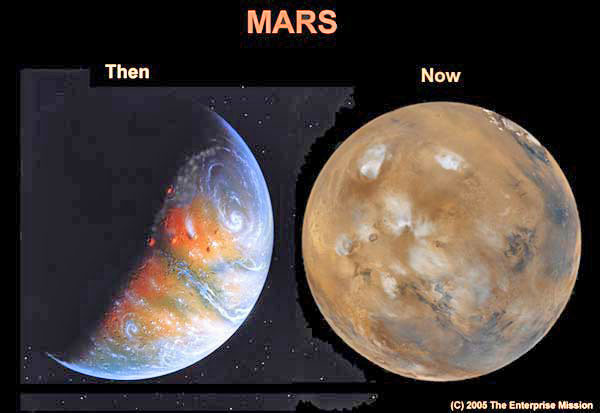
Regardless of the details, the point of such an elaborate, redundantly encoded communication – if it is “communication” -- could only be to signal the presence of vital information on/in Iapetus regarding its strange presence in the Saturn system … to whoever discovered this unique “moon” when they finally developed (redeveloped?) the technology able to reach Saturn once again!
But, a signal that would only be successful if those reaching it this time understood the crucial, ancient “code key” of hyperdimensional physics: base 60. Which, among other essentials, includes the non-arbitrary, elemental reason for a “360-degree circle” … and the size of the British mile … based on sexagesimal “tetrahedral geometry” itself.
Ok, you now see where I’m going ….
In the “spaceship moon model” for Iapetus -- leaving aside for the moment the non-trivial reasons for building such a stupendous “craft” -- there are only two possible points of origin:
What was it Goldsmith and Owen said, back in 1980 …?
........
Now, if Iapetus was created (literally, “from the ground up”) -- to memorialize “something” extremely valuable and historically important -- both its size and orbital elements could easily have been precisely engineered … as recurring aspects of the same “tetrahedral message” embodied in other aspects of this satellite … a much vaster variant on our previously discovered (and deciphered) tetrahedral “Message of Cydonia.”
Curiously, if you again take that orbital inclination of Iapetus in degrees (~ 15), and divide it into the ~ 60 Saturn radii of its orbit, the result is 4 … the number of the very planet where we found our first extraterrestrial “tetrahedral” design.
In other words, is Iapetus actually a time capsule -- with its own haunting, multi-leveled Message? A message ultimately ending with (below):
“Mars is where our solar-system-wide civilization was centered … and where its shattering demise began …?”

Regardless of the details, the point of such an elaborate, redundantly encoded communication – if it is “communication” -- could only be to signal the presence of vital information on/in Iapetus regarding its strange presence in the Saturn system … to whoever discovered this unique “moon” when they finally developed (redeveloped?) the technology able to reach Saturn once again!
But, a signal that would only be successful if those reaching it this time understood the crucial, ancient “code key” of hyperdimensional physics: base 60. Which, among other essentials, includes the non-arbitrary, elemental reason for a “360-degree circle” … and the size of the British mile … based on sexagesimal “tetrahedral geometry” itself.
Ok, you now see where I’m going ….
In the “spaceship moon model” for Iapetus -- leaving aside for the moment the non-trivial reasons for building such a stupendous “craft” -- there are only two possible points of origin:
[I personally favor 1) above as part of the Geminga Scenario and will elaborate upon later.]1) a “vehicle” from somewhere, far beyond the solar system … some kind of “interstellar ark”– which came to this system a long, long time ago … and ended up at Saturn
2) a spaceship “moon” built within this solar system, for equally obscure reasons … which also ended up at Saturn -- but with a visible signature, the baffling “light/dark dichotomy” -- which would flag it across the entire system and future millennia as “anomalous” … for the returning descendents of whoever originally left it circling eternally in orbit ….
What was it Goldsmith and Owen said, back in 1980 …?
… the only object in the Solar System which we might seriously regard as an alien signpost – a natural object deliberately modified by an advanced civilization to attract our attention [emphasis added] ….
Moon with a View 4
www.bibliotecapleyades.net
Similar threads
- Replies
- 4
- Views
- 83
- Replies
- 5
- Views
- 414
- Replies
- 9
- Views
- 433
- Replies
- 7
- Views
- 157
Latest Discussions
- Replies
- 202
- Views
- 4K
- Replies
- 113
- Views
- 636
- Replies
- 372
- Views
- 3K
Forum List
-
-
-
-
-
Political Satire 8051
-
-
-
-
-
-
-
-
-
-
-
-
-
-
-
-
-
-
-
ObamaCare 781
-
-
-
-
-
-
-
-
-
-
-
Member Usernotes 469
-
-
-
-
-
-
-
-
-
-
